09CrCuSb steel pipes, as steel resistant to sulfuric acid dew point corrosion, have important application value in the power, chemical, metallurgical, and other industries. The name of this steel comes from its chemical composition: 09 represents carbon content ≤0.09%, and Cr, Cu, and Sb are its main alloying elements. This unique composition ratio enables it to exhibit excellent corrosion resistance in sulfur-containing flue gas environments. 09CrCuSb steel pipes manufactured by straight seam welding process have become key materials for flue gas desulfurization systems, boiler air preheaters, and other equipment with their stable quality and relatively low cost.
First, the material properties and corrosion resistance mechanism of
09CrCuSb straight seam steel pipes
The core advantage of 09CrCuSb steel lies in its special resistance to sulfuric acid dew point corrosion. When sulfur in the fuel is burned to form sulfur dioxide, sulfuric acid dew will be formed when it encounters water vapor in low-temperature areas (such as chimneys and air preheaters), causing serious corrosion to ordinary carbon steel. 09CrCuSb steel forms a dense passivation film through the synergistic effect of alloying elements: copper elements can promote the formation of a stable protective layer on the surface of the steel, chromium elements improve the corrosion resistance of the matrix, and antimony elements further inhibit local corrosion. Experimental data show that in a 60°C, 50% sulfuric acid solution, the corrosion rate of 09CrCuSb steel is only 1/5 to 1/8 of that of ordinary Q235 steel, and the service life can be extended by more than 3 times.
Second, the production process and technical points of 09CrCuSb straight seam steel pipe
The production process of straight seam welded steel pipe includes key processes such as strip longitudinal shearing, forming, welding, and sizing. For 09CrCuSb steel, special attention should be paid to the following links:
1. Slab control: adopt a controlled rolling and controlled cooling process (TMCP) to ensure uniform distribution of elements such as copper and antimony to avoid segregation. The thickness tolerance of hot-rolled coils must be controlled within ±0.2mm to ensure the quality of subsequent welding.
2. Welding process: high-frequency resistance welding (HFW) or submerged arc welding (SAW) is mostly used. During welding, the temperature of the heat-affected zone needs to be controlled at 900-1100℃ to avoid oxidation of alloy elements. Online heat treatment, such as induction annealing, is required after welding to eliminate welding stress.
3. Nondestructive testing: 100% eddy current testing (ECT) and ultrasonic testing (UT) are necessary means to ensure that the pipe body is defect-free, especially focusing on cracks and unfused problems in the weld area.
Third, the industry application and typical cases of 09CrCuSb straight seam steel pipe
In the desulfurization system of thermal power plants, 09CrCuSb straight seam steel pipes are mainly used as GGH (flue gas heat exchanger) shells, flue expansion joints, and other components. A 600MW unit renovation project shows that after using 09CrCuSb steel pipes with a wall thickness of 8mm to replace traditional ND steel, the flue life is increased from 2 years to 6 years, and the maintenance cost is reduced by 40%. In the sulfur recovery unit of the refinery, the pipes made of this material can withstand the corrosion of wet flue gas containing H₂S and SO₂, and the maximum operating temperature is 150℃. It is worth noting that its resistance to chloride ion corrosion is relatively weak, so it needs to be used with anti-corrosion coating when used in coastal power plants.
Fourth, the market status and development trend of 09CrCuSb straight seam steel pipes
Major domestic manufacturers have formed an annual production capacity of more than 100,000 tons. According to the 2024 industry report, the price of 09CrCuSb steel pipes is 20% to 30% higher than that of ordinary weathering steel, but the cost advantage of the entire life cycle is obvious. The current technical improvement directions include:
- Composite process: Develop 09CrCuSb/carbon steel double-layer composite pipes to reduce material costs;
- Intelligent production: Through laser vision to guide welding robots, the weld defect rate is controlled below 0.1%;
- Green standard: The newly revised GB/T 29732-2024 puts forward higher requirements for the recyclability of steel, and promotes manufacturers to optimize alloy ratios.
Fifth, recommendations and precautions for the use of 09CrCuSb straight seam steel pipes
1. Selection guidance: For flue gas environments with a flow rate of >15m/s, it is recommended to use steel pipes with a wall thickness of ≥10mm to prevent erosion corrosion; in low-temperature environments (<60℃), the alloy content can be appropriately reduced to save costs.
2. Installation specifications: ER55-CuSb welding wire must be used for welding joints to avoid electrochemical corrosion caused by welding of dissimilar steels. The spacing between pipe supports should not exceed 80% of the standard value to prevent vibration wear.
3. Maintenance strategy: An endoscope should be used to check the thinning of the pipe wall during annual shutdown and maintenance, with a focus on monitoring the heat-affected zone of the weld. When the local corrosion depth exceeds 30% of the wall thickness, surfacing repair or local replacement is required.
The technical maturity of 09CrCuSb straight seam steel pipes has been verified by engineering, but with the tightening of environmental protection standards (such as the reduction of the SO₂ emission limit to 35mg/m³), it may be necessary to develop high-end variant materials containing Mo and Ni in the future. At the current stage, reasonable material selection, standardized construction, and scientific maintenance are still the keys to leveraging its performance advantages.
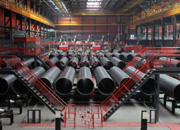 Threeway Steel is known as a professional supplier engaged in manufacturing and distributing a wide range of steel pipe, and our headquarter located the central part of China – Hunan and six associated factories throughout China.
Threeway Steel is known as a professional supplier engaged in manufacturing and distributing a wide range of steel pipe, and our headquarter located the central part of China – Hunan and six associated factories throughout China.
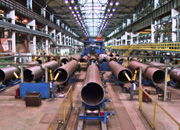 Threeway Steel is known as a professional supplier engaged in designing, manufacturing and distribution of a wide range of steel products with the headquarter located the central part of China – Hunan and six associated factories throughout China.
Threeway Steel is known as a professional supplier engaged in designing, manufacturing and distribution of a wide range of steel products with the headquarter located the central part of China – Hunan and six associated factories throughout China.
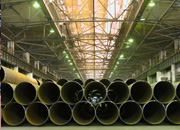 Threeway Steel is known as a professional supplier engaged in designing, manufacturing and distribution of a wide range of steel products with the headquarter located the central part of China – Hunan and six associated factories throughout China.
Threeway Steel is known as a professional supplier engaged in designing, manufacturing and distribution of a wide range of steel products with the headquarter located the central part of China – Hunan and six associated factories throughout China.
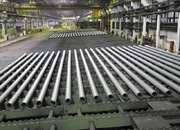 Threeway Steel is known as a professional supplier engaged in designing, manufacturing and distribution of a wide range of steel products with the headquarter located the central part of China – Hunan and six associated factories throughout China.
Threeway Steel is known as a professional supplier engaged in designing, manufacturing and distribution of a wide range of steel products with the headquarter located the central part of China – Hunan and six associated factories throughout China.
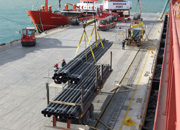 Threeway Steel is known as a professional supplier engaged in designing, manufacturing and distribution of a wide range of steel products with the headquarter located the central part of China – Hunan and six associated factories throughout China.
Threeway Steel is known as a professional supplier engaged in designing, manufacturing and distribution of a wide range of steel products with the headquarter located the central part of China – Hunan and six associated factories throughout China.

